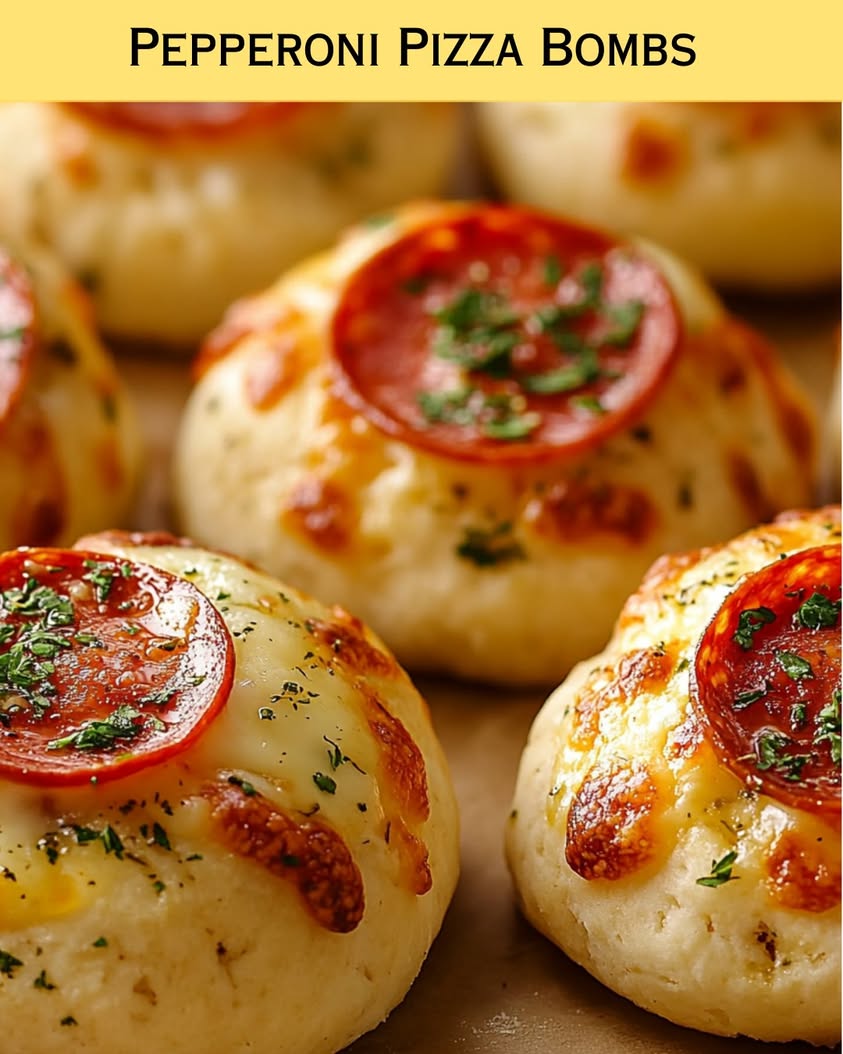Balsamic Caprese Grilled Flank Steak: A Flavorful Summer Delight
Balsamic Caprese Grilled Flank Steak is the perfect recipe to bring a burst of summer flavors to your table. This delightful dish layers the robust taste of flank steak with the fresh, bright notes of caprese ingredients: ripe tomatoes, creamy mozzarella, and aromatic basil. Drizzled with a tangy balsamic reduction, this recipe beautifully showcases how a few quality ingredients, when grilled to perfection, can create a dish that is both impressive and utterly delicious. Ideal for summer barbecues or a casual family dinner, this dish invites everyone to enjoy the best of seasonal produce in every bite.
The sweet and tangy balsamic glaze not only enhances the steak but also adds a vibrant aesthetic appeal to the dish, making it a feast for the eyes as well as the palate. Each juicy slice of flank steak is complemented by the cooling mozzarella and juicy tomatoes, creating a flavor harmony that’s hard to resist. It’s an invitation to gather around the grill, share stories, and savor life’s simple pleasures.
Quick Recipe Highlights
- Flavor Profile: Bold and savory with a delightful balance of tangy balsamic and fresh ingredients.
- Texture: Tender, juicy steak paired with creamy mozzarella and crunchy tomatoes.
- Aroma: Fragrant notes of grilled meat, fresh basil, and sweet balsamic reduction.
- Visual Appeal: A stunning presentation of vibrant reds, greens, and creamy whites.
- Skill Level Needed: This dish requires moderate grilling skills, perfect for home cooks ready to elevate their culinary game.
- Special Equipment: Utilizing a grill or grill pan is essential for achieving the perfect sear on the flank steak.
Recipe Overview
- Difficulty Level: Medium, with some techniques involved in grilling and marinating.
- Category: This is a main dish, perfect for summer meals or festive gatherings.
- Cuisine: Inspired by Italian cuisine, featuring classical caprese flavors elevating grilled meat.
- Cost: Relatively economical, particularly when peppers and tomatoes are in season.
- Season: Ideal for summer when tomatoes are juicy and at their peak flavor.
- Occasion: An excellent choice for summer barbeques, family gatherings, or special date nights.
Why You’ll Love This Recipe
Experience a blend of taste and texture that everyone will enjoy! The combination of marinated flank steak grilled to perfection with fresh caprese toppings is perfect for summer gatherings. It’s not just about the rich flavors; it’s also about the convenience. Quick to prepare and requiring minimal ingredients, this dish makes weeknight dinners feel special without the stress.
Nutritionally, flank steak provides a good source of protein, while the tomatoes and basil add vitamins and antioxidants. This dish encourages social dining, as it’s easy to prepare in larger quantities for parties. Plus, it’s cost-effective — using seasonal produce ensures fresh flavors that won’t break the bank.
Historical Background and Cultural Significance
The origins of flank steak can be traced back to traditional butcher practices, where less-utilized cuts were transformed into delightful meals. As part of Italian cuisine, the caprese salad represents the summer sun and the use of fresh produce.
Over the years, the combination of grilled meats and fresh salads has evolved into numerous culinary styles, with regional variations adapting to local ingredients and preferences. The popularity of the caprese flavor infusion has ensured that it remains a household favorite worldwide.
Ingredient Deep Dive
Flank steak, a lean cut known for its bold flavors, has been a culinary staple in Southern and Central America and is revered for both its rich taste and versatility. It is essential to choose high-quality flank steak, ideally grass-fed, for the best flavor. Proper storage involves keeping it sealed in the refrigerator, ideally for a day or two before cooking.
Fresh mozzarella is comparable in importance, offering creaminess and a delicate flavor. Selecting mozzarella made from whole milk guarantees the best taste experience. It should be kept submerged in its own whey or liquid to maintain moisture.
Tomatoes, particularly heirloom varieties, bring vibrant flavors to dishes and are best stored at room temperature to preserve their taste. Nutritionally, they provide vitamins C and K, while balsamic vinegar adds depth and sweetness when combined with high-quality olive oil.
Common Mistakes to Avoid
- Overcooking the steak can lead to toughness; always use a thermometer for accurate doneness.
- Skipping the marinating process can lead to bland flavor; ensure to marinate for at least an hour.
- Using low-quality balsamic vinegar will affect the overall flavor; opt for aged varieties for the best taste.
- Not letting the meat rest post-grilling can cause juices to run; allow it to rest for at least five minutes.
- Forgetting to slice against the grain can make the meat tough; always cut against the fibers for tenderness.
- Using stale mozzarella will dull the dish; ensure your cheese is fresh and quality.
- Neglecting seasoning can lead to a one-dimensional flavor; always season your steak well before cooking.
- Overcrowding the grill will reduce cooking temperature; grill in batches for the best results.
Essential Techniques
Marinating is key to infusing flavors into the flank steak. For success, combine high-quality ingredients, including oil, vinegar, herbs, and spices, allowing the meat to soak in these flavors for a minimum of one hour. A common pitfall is under-marinating, which results in less pronounced flavors. Look for a deeper color and aroma from the marinade.
Grilling requires attention to heat levels; starting with high heat for searing and then reducing for even cooking is essential. The visual cue for achievement includes a good sear with grill marks while avoiding a smoky, burnt taste.
Pro Tips for Perfect Balsamic Caprese Grilled Flank Steak
– Select flank steak about an inch thick for optimal grilling — it helps to keep the inside nice and juicy.
– Use a meat thermometer to check for doneness; 130°F is medium-rare, ensuring the steak remains tender.
– Allow the steak to rest after grilling to retain moisture before slicing.
– Pair complementary traditional sides like roasted vegetables for a well-rounded meal.
– Make a double batch of the balsamic glaze; it can also be used as a dressing on salads or vegetables.
– Consider adding sliced avocado or arugula for extra flavor and nutrition.
– For a more robust garlic flavor, marinate with garlic-infused olive oil.
– Experiment with different vinegars, such as red wine vinegar or apple cider vinegar, for unique flavor twists.
Variations and Adaptations
This recipe can easily adapt to various culinary styles; consider using chipotle powder in the marinade for a smoky twist. Seasonal adaptations include adding grilled summer vegetables like zucchini or bell peppers for a colorful vegetable medley alongside the steak.
For those on special diets, the recipe can be made gluten-free by ensuring all your ingredients meet gluten-free standards and for a vegan alternative, replacing steak with marinated and grilled tofu or mushrooms.
Flavor variations can include adding fresh herbs like thyme or rosemary to the marinade or using different cheese, such as burrata, for creaminess.
Serving and Presentation Guide
To present beautifully, slice the flank steak into thin strips and layer it on a serving platter with sliced mozzarella and tomatoes. Drizzle balsamic glaze over the top and garnish with fresh basil.
Consider using vibrant plateware that contrasts with the colorful ingredients. Traditional accompaniments can include a side salad or Italian bread; modern alternatives may feature charcuterie components or artisan dips.
Serving temperature matters; flank steak is best enjoyed warm, while cheese and vegetables can be at room temperature to enhance flavors.
Wine and Beverage Pairing
A medium-bodied red wine, like Chianti or a fruity Zinfandel, pairs wonderfully with flank steak, enhancing its rich flavor. For a lighter touch, try a chilled Pinot Grigio or a crisp Sauvignon Blanc, which complement the tomato and mozzarella flavors.
For non-alcoholic alternatives, consider sparkling water infused with fresh lemon or homemade iced tea to refresh the palate.
For coffee lovers, a robust cold brew can also provide a unique balance with this savory dish, highlighting the depth of flavors.
Storage and Shelf Life
Store leftover grilled flank steak in an airtight container in the refrigerator for up to three days. Ensure it cools before sealing to prevent moisture accumulation.
For optimal reheating, slice thinly and rewarm in a pan over low heat to retain juiciness.
Freezing is also an option; wrap portions tightly in aluminum foil, followed by plastic wrap before placing in the freezer for up to two months. Thaw overnight in the fridge for best results when ready to enjoy.
Make Ahead Strategies
For convenience, marinate the steak the night before or in the morning, allowing flavors to intensify. You can pre-slice and prepare the tomatoes and mozzarella to save time during meal preparation.
Keep the balsamic glaze stored separately, and combine before serving. This approach maintains freshness and texture while ensuring a quick assembly when it’s time to eat.
Nutritional Deep Dive
Flank steak is an excellent source of protein, providing essential amino acids needed for muscle repair and growth. Containing around 25 grams of protein per 3-ounce serving, it’s ideal for a balanced diet.
The tomatoes and basil contribute antioxidants, vitamins C, and other phytonutrients benefiting heart health. The balsamic glaze adds minimal calories while enhancing flavor without adding excess fat.
Controlling portion sizes of meat can aid in balanced carbohydrate intake, helping manage weight effectively.
Dietary Adaptations
Those seeking a gluten-free version can easily omit any gluten-containing marinades or dressings. Vegan enthusiasts can swap the steak for tofu or portobello mushrooms, marinating them similarly for depth of flavor.
A low-carb variant involves skipping any bread-based sides and focusing on vegetables. Meanwhile, a keto or paleo diet-friendly approach would work well with the heavy use of meats and vegetables, minimizing storage carbohydrates.
For dairy-free versions, consider using nut-based cheeses or skipping the cheese altogether while maintaining the fresh tomato and basil combination.
Troubleshooting Guide
If the flank steak turns out tough, it’s likely due to overcooking. Always check with a meat thermometer for the best results.
If the flavor seems bland, it may be due to insufficient marinating time; adjust by ensuring longer soaks in the marinade in future preparations.
In case of uneven cooking, consider using a grill pan for consistent heating and avoid overcrowding during cooking.
For ingredient substitutions, it may be necessary to reduce other flavors if you switch out key components, such as cheese.
Recipe Success Stories
Community feedback on Balsamic Caprese Grilled Flank Steak often highlights its ease of preparation and impressive results. Variations have emerged detailing unique marinades, and many readers have expressed their delight in experimenting with grilling techniques.
An adaptation using grilled peaches alongside the caprese ingredients has also been a popular suggestion, showcasing seasonal flair, while others recommend using homemade pesto to elevate the dish even further.
Many enthusiasts find that photography tips help their social media presentations, often sharing their colorful plates to inspire others.
Frequently Asked Questions
1. Can I use another cut of meat for this recipe?
Yes, you can substitute flank steak with other cuts like skirt steak or sirloin, but adjust the cooking time as they may vary in thickness and tenderness.
2. How long should I marinate the steak?
Marinating the flank steak for a minimum of 1 hour is recommended, but for optimal flavor, marinate overnight in the refrigerator.
3. Can I make this recipe ahead of time?
Absolutely! You can prepare the steak up to a day ahead by marinating it and storing it in the fridge until you are ready to grill it.
4. What is the best way to slice flank steak?
Always slice flank steak against the grain to ensure maximum tenderness. Look for the direction of the fibers and cut perpendicular to them.
5. Can this dish be served cold?
Yes, Balsamic Caprese Grilled Flank Steak can be served cold as a salad topping, making it a refreshing option for warm summer days.
6. What are good sides to serve with this dish?
Consider serving roasted vegetables, a fresh garden salad, or crusty bread as delicious accompaniments to this flavorful dish.
7. How can I adjust the spice level?
You can increase the spice level by adding red pepper flakes to the marinade, or by incorporating a spicy condiment to your plate.
8. Is this recipe suitable for meal prep?
Yes, this dish works well for meal prep. Cook the flank steak and prepare the caprese components in advance for easy grab-and-go lunches.
9. How long can leftovers be stored in the fridge?
Leftover flank steak can be stored in the refrigerator for up to 3 days when kept in an airtight container to maintain freshness.
10. What type of balsamic vinegar should I use?
It’s best to use high-quality, aged balsamic vinegar for the richest flavor. Look for brands that have a syrupy texture and deep flavor.
Additional Resources
Explore more flavorful recipes featuring fresh ingredients, such as zesty pasta salads or unique grilling techniques on our blog.
Check out our detailed guides on how to select the finest tomatoes and the best tricks for grilling steak to perfection.
Equipment recommendations for grilling can help you find the right tools, ensuring your cooking experience is both easy and enjoyable.
Also, try out seasonal variations of this recipe; as autumn approaches, consider incorporating butternut squash or roasted beets into the caprese mix for a delightful twist.
Join the Conversation
We love hearing from you! Share your thoughts on this recipe in the comments below and connect with us on social media.
Post your recreations and let us see how your Balsamic Caprese Grilled Flank Steak turned out by tagging us!
Photography tips are always welcome, encouraging you to capture those delicious moments and share them with our community of enthusiastic cooks and food lovers.
The Recipe
Balsamic Caprese Grilled Flank Steak
Serves: 4
Prep Time: 15 mins
Cook Time: 10 mins
Total Time: 25 mins
Kitchen Equipment Needed
- Grill or grill pan
- Meat thermometer
- Cutting board
- Sharp knife
- Mixing bowl
Ingredients
- 1 lb flank steak
- 2 tbsp balsamic vinegar
- 2 tbsp olive oil
- 1 clove garlic, minced
- Salt and pepper to taste
- 1 cup cherry tomatoes, halved
- 8 oz fresh mozzarella, sliced
- 1/2 cup fresh basil, for garnish
Directions
- In a mixing bowl, whisk together balsamic vinegar, olive oil, garlic, salt, and pepper.
- Place flank steak in a shallow dish and pour marinade over it. Cover and refrigerate for at least 1 hour, preferably overnight.
- Preheat your grill to medium-high heat. Remove steak from marinade and discard leftover marinade.
- Grill steak for 6-8 minutes per side or until desired doneness is reached.
- Remove from grill, let it rest for 5 minutes, and then slice against the grain.
- On a serving platter, layer sliced steak, mozzarella, and tomatoes. Drizzle with additional balsamic vinegar and top with fresh basil.
Recipe Notes
- For a more intense flavor, consider marinading the steak for up to 24 hours.
- Serve with a side of grilled vegetables or on a bed of arugula for added greens.
- This dish can be enjoyed warm or cold, perfect for leftovers the next day.




